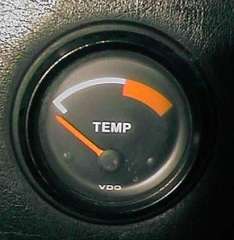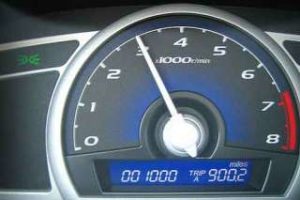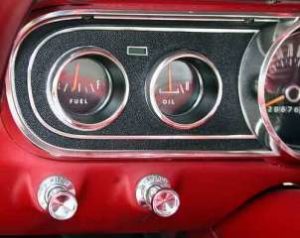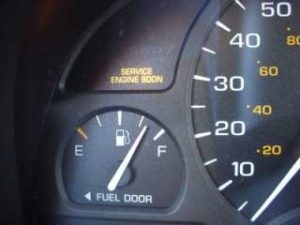Yes, Those Gauges On Your Dash Are Important
Whether you’re a new or experienced driver, it can be easy to overlook the gauges on your dashboard. Things don’t go wrong often, so the possibility of malfunction isn’t something that most of us think about on a daily basis. All the same, it’s important to keep an eye on your gauges and attend to any issues promptly.
Below, we’ve compiled a list of common dashboard gauges, along with the various problems you could experience based on their malfunction.

Fuel Gauge: The fuel gauge offers a good estimate of the amount of fuel in your tank.
What Could Go Wrong? If you don’t keep an eye on your fuel gauge, you could run out of gas. That much is pretty obvious.
What most people don’t realize, though, is that your fuel pump is submerged in gas at the bottom of your fuel tank. If you run close to empty on a regular basis, the fuel pump won’t be fully submerged, causing it to operate at a hotter temperature and wear out more quickly.

Speedometer: The speedometer offers a fairly accurate reading on your speed, usually in both miles per hour and kilometers per hour.
What Could Go Wrong? If you’re not paying attention, it can be very easy to let yourself accelerate past the speed limit. This is especially true in wide-open areas where you have fewer nearby cues to indicate just how fast you’re going.

Temperature Gauge: The temperature gauge doesn’t actually measure the temperature of your engine. Instead, it measures the temperature of your engine’s coolant. Most gauges have ranges for cold, normal, and hot.
What Could Go Wrong? If your car’s temperature gauge gets into the hot range, you need to move to a safe place and stop driving immediately. Ignoring this one can cause a lot of expensive damage in a fairly short amount of time.
It’s important to get an idea of how hot your car typically runs. While outside temperatures will affect the reading somewhat, temperatures that are consistently above your car’s normal range could indicate problems with the cooling system.
Fun Fact: The temperature gauge has a more enjoyable use, too. You may have noticed that car heaters blow cold air when you first start them in cold weather. What you may not realize, though, is that the temperature gauge is a great way to tell when the heater is ready to blow warm air. Next time, just wait until the arrow moves out of the cold range. Once it’s up to the normal section, you’ll be able to turn on the heat without blasting yourself with cold air.

Image by Lazy_Lightning
Tachometer: Your tachometer tells you how fast your engine is turning in revolutions per minute. Not all cars have a tachometer.
What Could Go Wrong? You’ll want to avoid working your engine so hard that it surges up into the “danger zone” as indicated on the tachometer. If you notice that your tachometer is reading abnormally high when you accelerate, that could indicate problems and you should see a mechanic.

Image by vtengr4047.
Oil Pressure Gauge (this might also come in the form of a warning light): Although you should check your oil levels manually on a regular basis, this gauge will let you know when your car’s oil pressure is getting too low.
Fun Fact: Did you know that many of the well known brands like Bosch and Marshall are producing new gauges in vintage look for your classic car?
What Could Go Wrong? If your car’s oil pressure gauge lights up to indicate lack of oil pressure, you need to pull over at the very first safe opportunity and turn off the engine. You’ll want to check the oil levels and add oil before moving again.

Malfunction Indicator Lamp (also known as the “check engine” light or “service engine soon” light): This is kind of a catchall problem indicator, and it could signal something as trivial as a loose gas cap or as significant as major engine trouble.
What Could Go Wrong? In most cases, the light isn’t a sign of anything serious. For that reason, a lot of people ignore it. The problem there is that you could end up driving around with a very serious issue and causing even more damage to your car.
Many stores now sell diagnostic tools that allow drivers to diagnose the problems on their own. While these can be helpful with defraying costs, you should always contact a mechanic if you notice any performance issues that appear alongside the light, or if the check engine light continues to appear.

